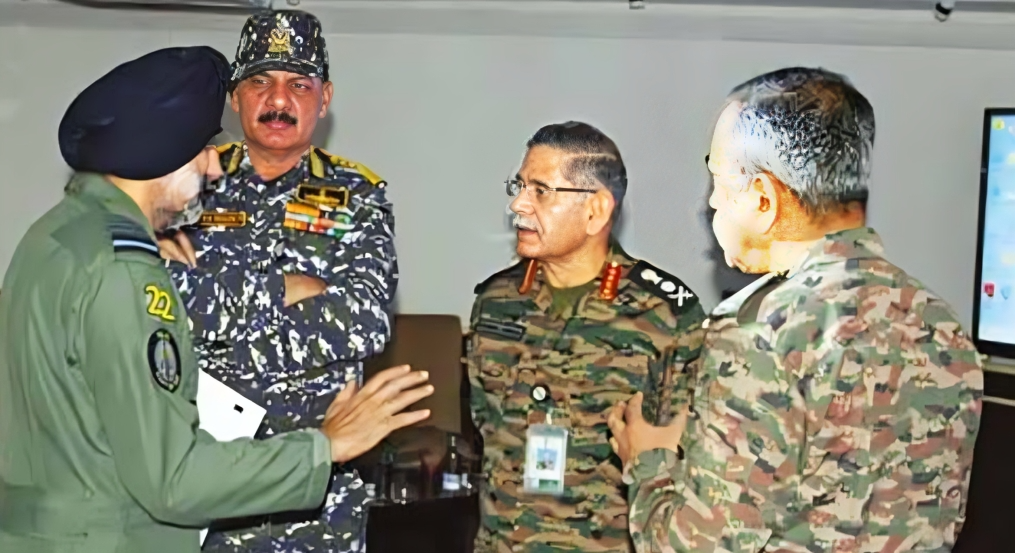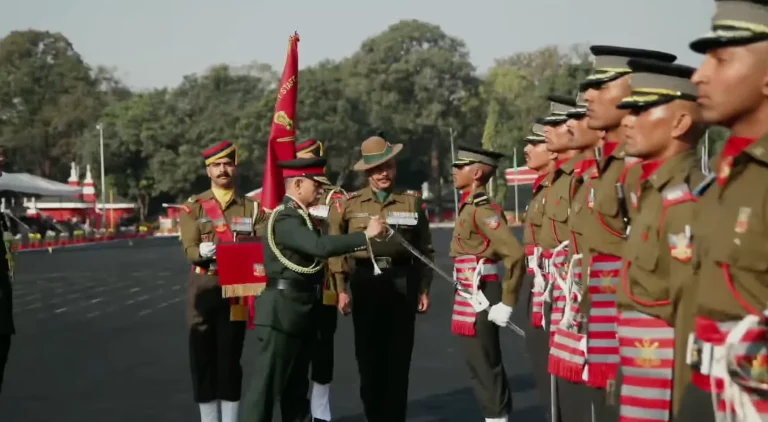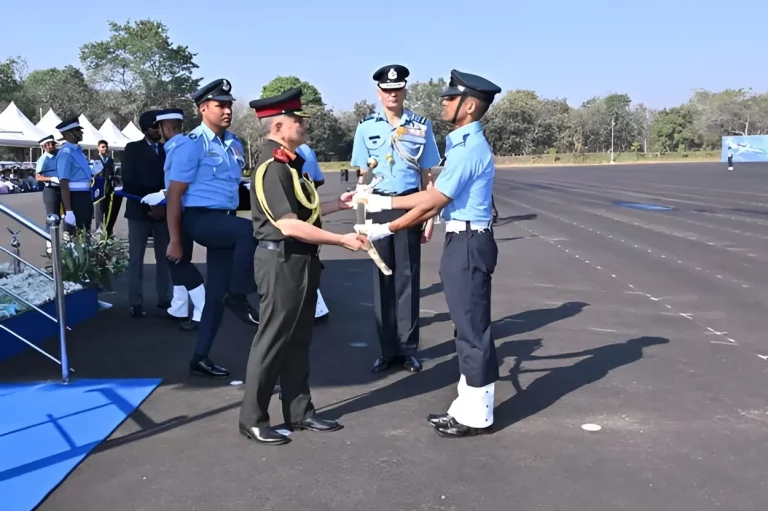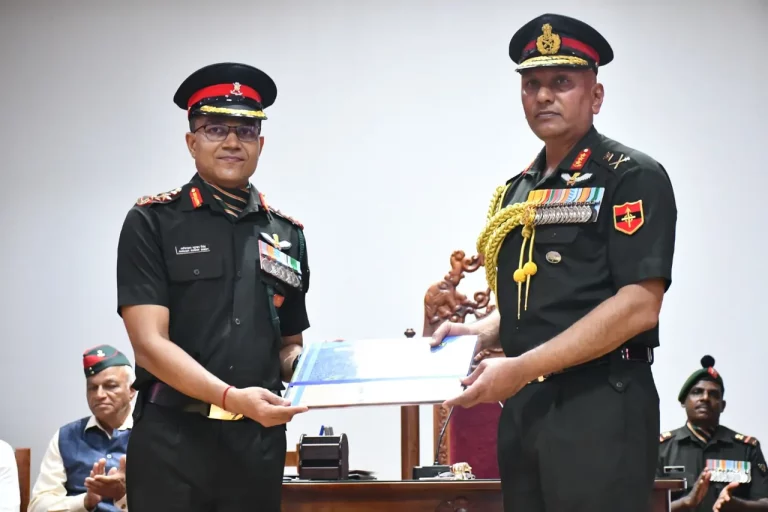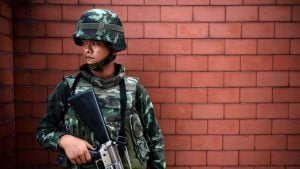The Indian Army has unveiled a comprehensive booklet detailing Operation Sindoor, a precision strike operation aimed at neutralizing terrorist infrastructure earlier this month. This document sheds light on the significant advancements in military coordination and reflects a transformative shift in India’s defense strategy, emphasizing an increasing reliance on indigenous technology.
The booklet features visuals from the state-of-the-art operations room where top military leadership, including Army Chief General Upendra Dwivedi, Navy Chief Admiral Dinesh K Tripathi, and Air Force Chief Air Chief Marshal AP Singh, oversaw the mission in real-time. The operations centre utilized advanced tools such as real-time data streams, drone surveillance feeds, and tactical maps, underscoring the Indian military’s impressive technological capabilities. A particularly noteworthy image, timestamped at 01:05 hours on May 7, 2025, captures a pivotal moment during the operation.
Operation Sindoor was initiated as a direct consequence of provocations, notably a recent terrorist attack targeting tourists in Pahalgam, Jammu and Kashmir. The Indian government attributed these acts of violence to groups backed by Pakistan. The precise strikes conducted during the operation were aimed at dismantling cross-border terror camps, showcasing India’s unwavering strategic commitment.
The timing of the booklet’s release is significant, coming in the wake of claims from Pakistan on May 1, 2025, that its air force had successfully compelled Indian jets to retreat along the Line of Control during a reconnaissance mission. By making the details of Operation Sindoor public, the Indian Army aims to counter these narratives, reaffirming its readiness and capability to execute rapid, coordinated military actions.
General Dwivedi, who took command as Army Chief in June 2024, has prioritized modernization under his leadership. Initiatives like Project SAMBHAV, which utilizes 5G networks for secure communications, along with the deployment of drones and counter-drone systems, have accelerated under his guidance. The booklet also addresses the restructuring of artillery units and a shift from traditional logistics methods, such as animal transport, towards advanced mobility solutions.
The release of this booklet has sparked attention both domestically and internationally, highlighting a broader transition towards inter-service synergy, operational transparency, and technological self-reliance. Echoing the Atmanirbhar Bharat initiative, the Indian military is progressively minimizing its dependence on foreign defense equipment in favor of homegrown innovations.
Operation Sindoor exemplifies the evolution of India’s military doctrine, which now incorporates integrated command structures, next-generation warfare tools, and a firm stance against terrorism. This newly released publication not only records a significant military accomplishment but also serves as a clear indication of India’s preparedness for forthcoming security challenges, focusing heavily on innovation and effective inter-agency collaboration.
